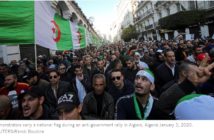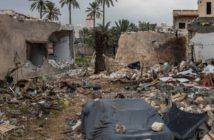By Anis BajrektarevicBy correlating hydrocarbons with the present political and socio-economic landscape, scholar Larry Diamond revealed that there are currently 22 states in the world which earn over 60% of their respective GDP from oil (and gas), and are ruled by non-democratic, authoritarian regimes. All of them are characterized by disparity, steep socio-economic cleavages, sharp political inequalities and lasting exclusions, not to mention poor human rights records. These represent nearly half of the countries considered by the Freedom House’s annual reports as ‘not free’– the very same that are predominantly held accountable by the Western media for domestic and regional insurgences, intl. armed conflicts, famines as well as for harboring and financing terrorists. As for the fact that 9 of the 11 top crude exporters are usually labeled as dictatorships, Prof. Diamond calls this a ‘democratic recession.’ This all points to the fact that there is not a single economic or political indicator in the MENA (Middle East – North Africa) region that suggests any ‘Spring’ has occurred, just a severe and lasting recession.

Eurozone
Indeed, modern history is full of examples where any given crude exporting countries’ development was hindered by huge revenues. Far too often, the petro-cash flow did not assist but delayed or derailed necessary economic diversification and political reform. Conveniently using revenues to buy and otherwise subsidize social peace, these regimes were actually creating a kind of self-entrapment in the form of an ever-stronger psychological and political dependence on hydrocarbons. Therefore, a real ‘Arab Spring,’ for the Middle East and the rest of us, will only come after socio-economic decoupling and diversification, socio-political horizontalization; all grounded in a decisive departure from oil-dependence. By no means would it ever come by the purely cosmetic change of who resides in the presidential palace.Fearing leftist republican pan-Arabism and Nasserism, the US encouraged Saudi Arabia to sponsor the large network of madrasahs throughout the Middle East – Prof. Cleveland reminds us in his capital work: A History of the Modern Middle East. In the last three decades, this tiger became ‘too big to ride’, as Lawrence Wright points out in The Looming Tower. Wright states that while representing only 1.5% of the world’s Muslims, Saudis fund and essentially control around 90% of the Islamic institutions from the US to Kazakhstan/Xinjiang and from Norway to Australia.By insisting on oversimplified and rigid, sectarian Wahhabi-Salafist interpretations of religious texts, most of these institutions along with their indoctrinated clerics are in fact both corrupting and preventing an important inner debate about Islam and modernity. Self-detained in denial limbo, they largely (and purposely) keep the Arab and non-Arab Muslim world in a dangerous confrontational course with both itself and the rest of the world.To this end, there is a claim currently circulating the EU, both cynical and misleading: ‘multiculturalism is dead in Europe.’ Not entirely surprising, as the EU has silently handed over one of its most important debates – that of European identity – to the wing-parties. The way to save Europe’s domestic cohesion and overall credibility within its strategic neighborhood lies in the reinvigoration of its ‘everything but institutions’ transformative powers, those that were stipulated in the Barcelona process of the European Neighborhood Policy as well as in the Euro-Med partnership (OSCE).But why is this the case?Young generations of Europeans are taught in schools about a compact unity (singularity) of an entity called the EU. However, as soon as serious external or inner security challenges emerge, historic Europe resurfaces. Formerly in Algeria, Egypt and Lebanon, then in Iraq (with the exception of France) and now with Libya and Syria; Central Europe is hesitant to act, Atlantic Europe is eager, Scandinavian Europe is absent, Eastern Europe is bandwagoning, and Russophone Europe is opposing.The 1986 Reagan-led Anglo-American bombing of Libyawas a one-time, head-hunting punitive action. This time, Libya (and currently Syria) has been given a different attachment: The considerable presence of China in Africa; successful circumventing pipeline deals between Russia and Germany (which will deprive Eastern Europe from any transit-related bargaining premium, and will tacitly pose a joint Russo-German pressure on the Baltic states, Poland and Ukraine); the boldness of Iran; and finally the overthrows of the EU friendly, Tunisian, Yemeni and Egyptian regimes –all combined– must have triggered alarm bells across Atlantic Europe.Thus, in response to the MENA crisis, the EU failed to keep up a broad, consolidated agenda in regards to its strategic neighborhood, even though it had the institutions, interest and credibility to do so. The only direct involvement of the continent ranged between a diplomatic de-legitimization (by Goebbels-izing the media for it) and punitive military engagement via the Atlantic Europe-led coalition of the willing. Confrontational nostalgia prevailed again over dialog (instruments) and consensus (institutions).The consequences are striking: The sort of Islam that the EU supported in the Middle East yesterday is the sort of Islam that Europe gets today. Small wonder that Islam in Turkey (or in Kyrgyzstan or Indonesia) is generally broad, liberal and tolerant while in Northern Europe it can be brutally dismissive, narrow and vindictively assertive.Anis Bajrektarevic is a contributor to Geopoliticalmonitor.com
Geopolitical Monitor Geopoliticalmonitor.com is an open-source intelligence collection and forecasting service, providing provide research, analysis and up to date coverage on situations and events that have a substantive impact on political, military and economic affairs.
.






